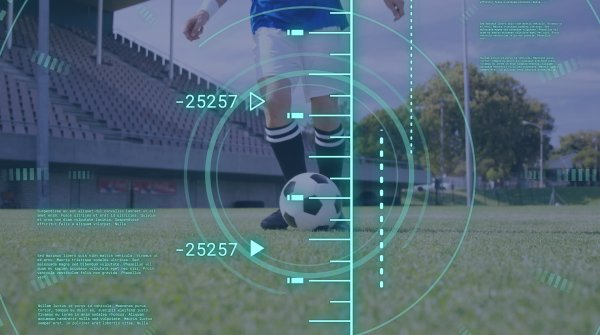
With sitting regarded as the new smoking, in terms of health as we become much more sedentary in our working habits, imagine have a gentle vibrating reminder to get up and take a walk. One of the aims of the development of printed e-textiles is human vitality, by supporting people at work, during sports or enhancing their overall wellbeing.
Working at the computer, posture is key, so a gentle physical reminder on adjusting your position can make a world of difference. Pushing yourself in your workout, monitoring your heart rate, with smart textiles connected to your phone, a wide range of applications can record and enhance the experience of your activity or physically alert you to adapt.
A new development between the Hoist Centre,a Dutch research center specialized in the development of printed electronics and Pauline van Dongen, designer of smart fashion, has resulted in a screen printing process that doesn’t interfere with the tactility or performance of a fabric, unlike previous electronics. These printed electronics are thin, lightweight and flexible, with a barely-there feel. Working with industrial designer Maxine Dasse of Tue, they created Mysa, a sweater that reduces stress by guiding the wearer through breathing exercises, using subtle vibrations in the spine programmed in a calming rhythm.
Printed solar panels also appeal in the digital world we live in. Always looking to charge up our smart phones or other USB devices. The printed solar panels that Hoist and van Dongen have designed, absorb the sun to create up to 1W of energy that will recharge a device, or the electricity can be stored until later in a battery embedded in the front of the shirt.

Created by using conductive inks such as silver and carbon, they have been developed with a high degree of stretch ability so that they can be applied onto stretch fabrics via thermoplastic polyurethane films (TPU) films, supplied by Framis. Special inks with a high degree of elasticity have been developed for this purpose, including DuPont’s Intexar TM, ensuring there is still freedom of movement within the garment.
One of the advantages of the printed electronics is that you can think of it as a trim that can be easily integrated into the garment using heat bonding. There is also the possibility of designers having more freedom in terms of delivering particular silhouettes and detail from the circuitry. Instead of embedding on the inside of a garment, the printed circuit can be applied on the outside as a design detail.
 SportsTechUnlocking the Future of Sports with AI
SportsTechUnlocking the Future of Sports with AI
- ISPO awards
- Mountain sports
- Bike
- Design
- Retail
- Fitness
- Health
- ISPO Job Market
- ISPO Munich
- ISPO Shanghai
- Running
- Brands
- Sustainability
- Olympia
- OutDoor
- Promotion
- Sports Business
- ISPO Textrends
- Triathlon
- Water sports
- Winter sports
- eSports
- SportsTech
- OutDoor by ISPO
- Heroes
- Transformation
- Sport Fashion
- Urban Culture
- Challenges of a CEO
- Trade fairs
- Sports
- Find the Balance
- Product reviews
- Newsletter Exclusive Area
- Magazine



